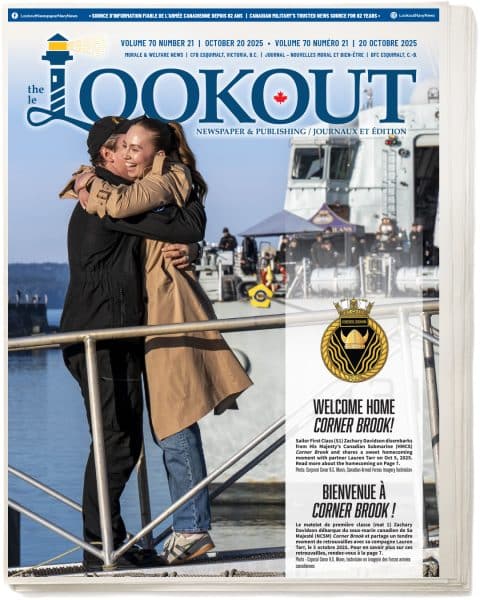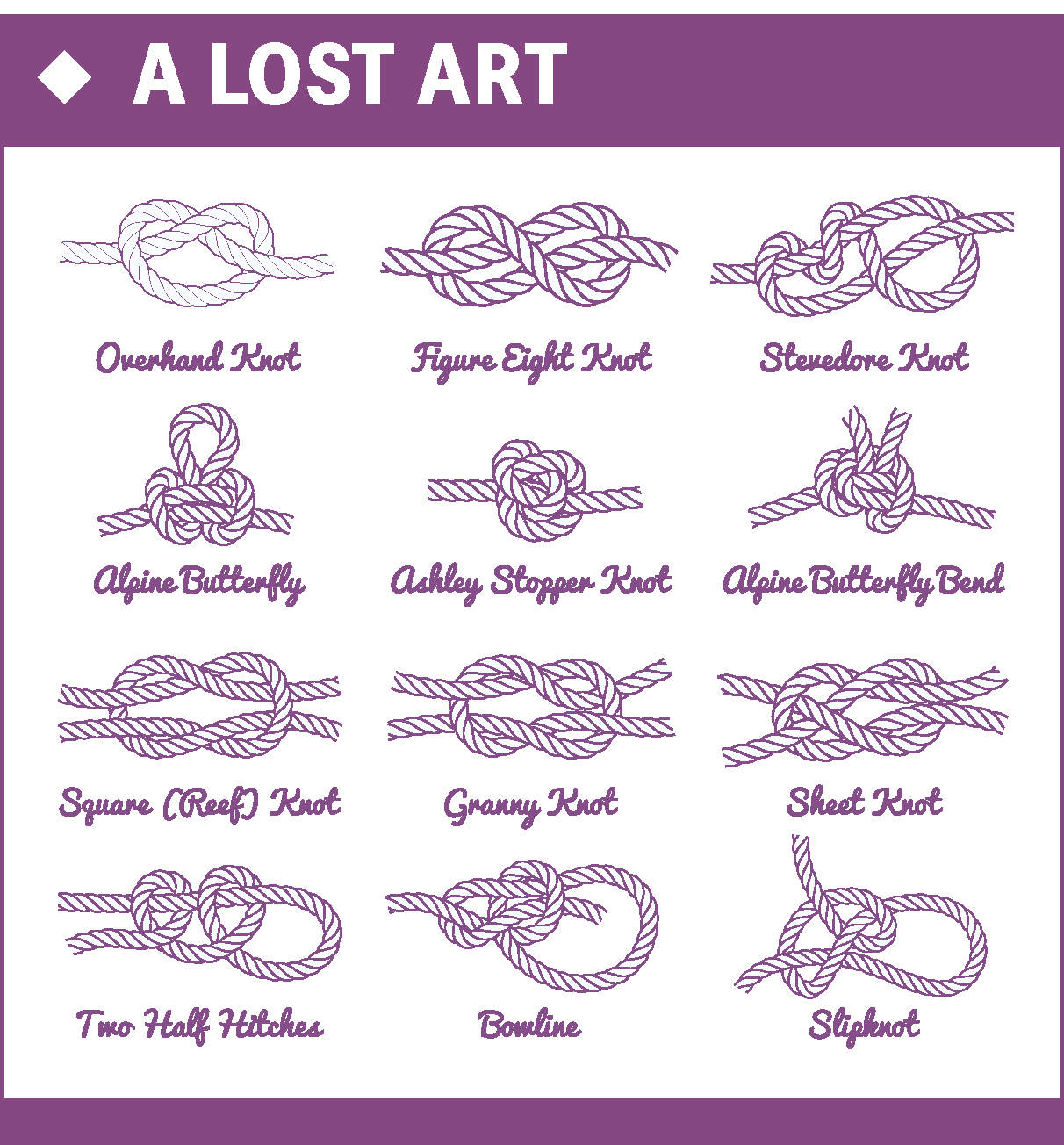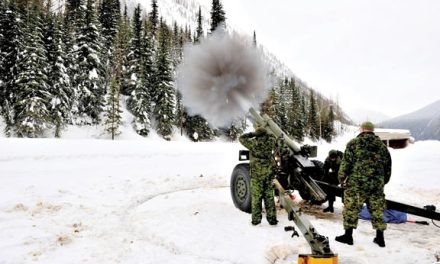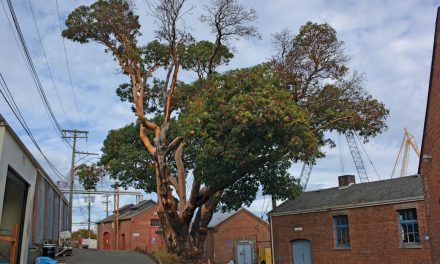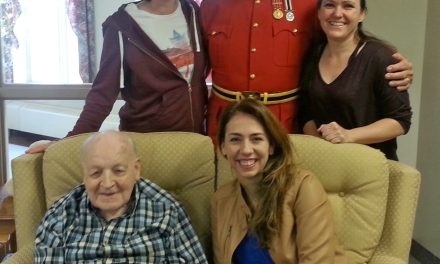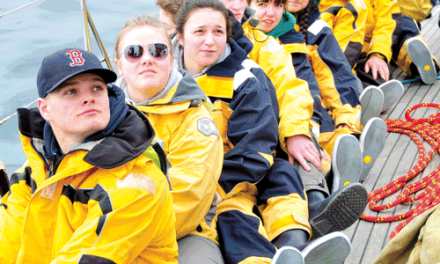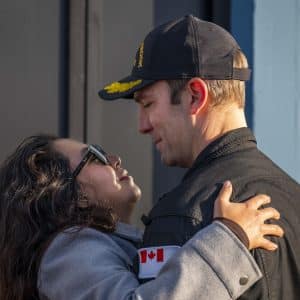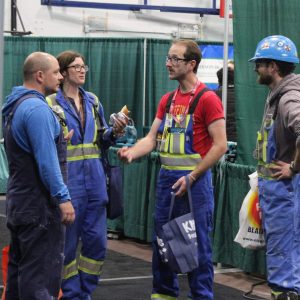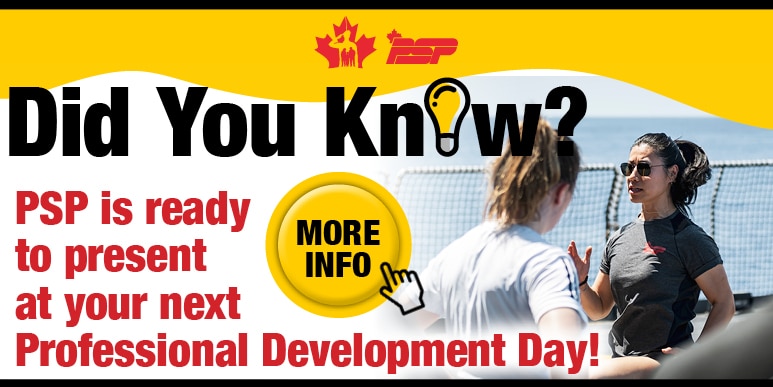
Sophie, a Grade 5 student from Glenlyon Norfolk School, shows off a knot she tied during her visit to Naval Fleet School (Pacific), Apr. 5. Photo: Peter Mallett/Lookout.
Peter Mallett, Staff Writer — Five Grade 5 students from Glenlyon Norfolk School joined the Naval Fleet School (Pacific) Campus Support team on April 5 to learn the tricks of the trade, specifically the art of tying knots.
The visit to CFB Esquimalt helped the students in their How the World Works unit of study, which involves re-using common household items and materials into sustainable use products, including rope and knots.
“It was really neat to learn all these knotting techniques and seeing how you use them in everyday life in the Navy,” said Juliet, one of the students.
The students and their teacher were very impressed with what they had learned during their first-ever visit to a military base.
Juliet’s classmate Kayci was also excited to learn.
“The knotting techniques are very important for the right jobs,” Kayci said. “If you persevere, you can master them.”
The students were welcomed by Lieutenant (Navy) Ellery Down, a Naval Warfare Officer who manages the Royal Canadian Navy (RCN) Sail program, and his assistant Chief Petty Officer Second Class (CPO2) (ret’d) John Haggis. Both served as the student’s instructors for their two-hour visit.
The importance of rope work in a sailor’s daily life is fast becoming a lost art in the RCN, Lt(N) Down said.
“The use of lines and the need for every sailor to know how to tie lots of knots has been reduced significantly since the end of the ‘Age of Sail,’” Lt(N) Down says. “Now, the only ones who really need to know knot tying are Boatswains, however onboard sailboats there will always be a need for all crew members to tie knots of various types.”
Lt(N) Down explained to the students the most prominent of all knots onboard an RCN warship – the bowline knot, used to tie heaving lines on hawsers, sheets onto sails, or tying a loop at the end of a line that can be easily undone. Other useful knots include the round turn and two-half hitches used to tie fenders or security equipment.
Lt(N) Down has served 13 years in the Canadian Armed Forces and was a former student at Glenlyon Norfolk in the mid-1990s. He was delighted the school reached out to the Base.
“It’s wonderful to see the students leave the classroom, meet real people doing real jobs and see how some of the world works,” said Lt(N) Down.
“The military members were very informative, and could relate to the students very well,” said Leanne Giommi, their teacher. “The students were a little nervous about what to expect but everyone we met was very welcoming and friendly.”
The visitors also received a guided tour of the Sail Training Vessel (STV) Goldcrest and the small boats jetties in Naden, where they learned the importance of basic seamanship skills.
